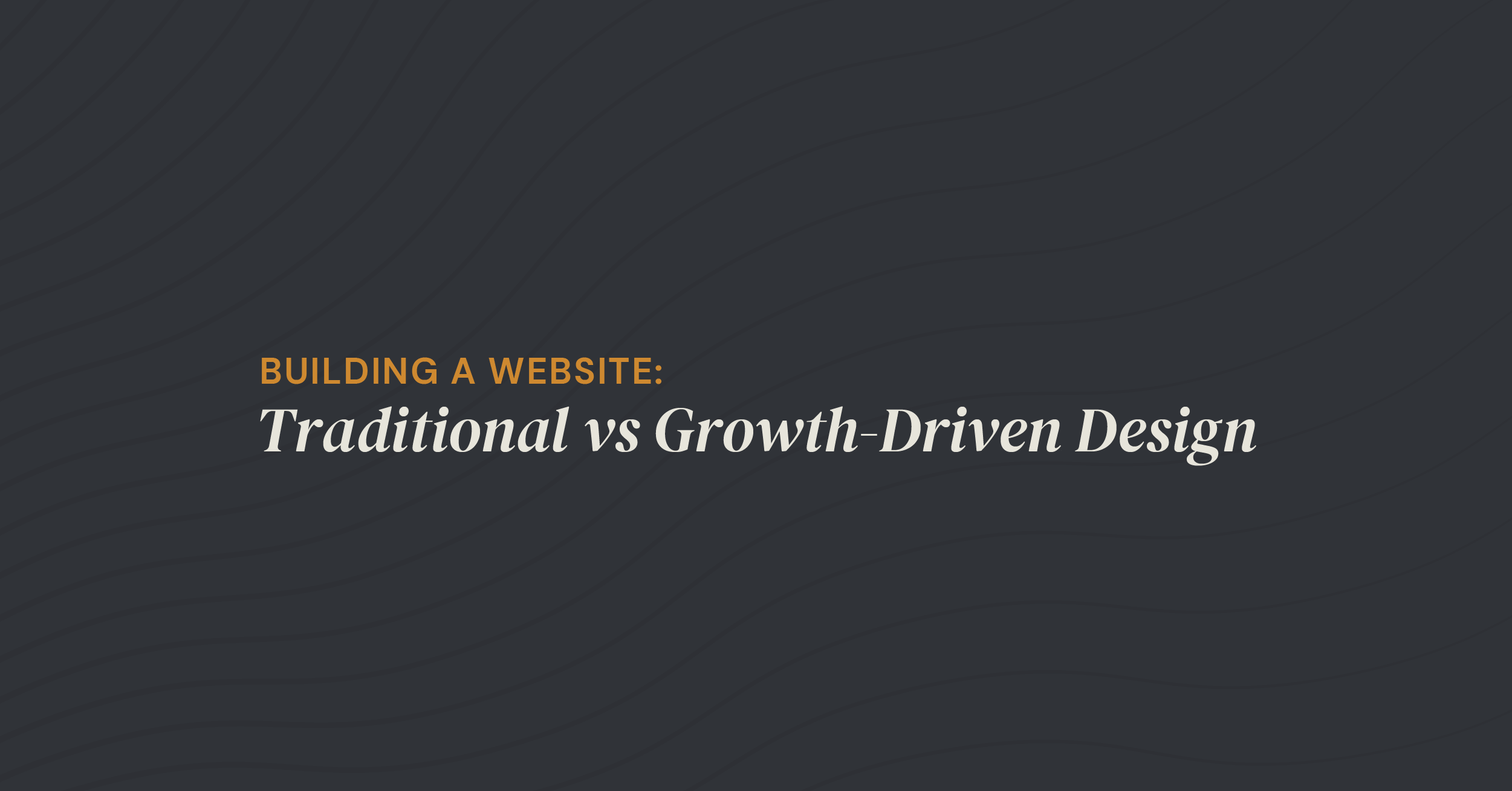BLOG Building a Website: Traditional vs Growth-Driven Design
Building a Website: Traditional vs Growth-Driven Design
POSTED BY Primitive | Jul 9, 2021

We all know websites are one of the very first impressions a visitor will have of your brand.
So, even at the sacrifice of dating myself, imagine your website covered in the e-quivalent of dated trends such as the powerful working woman’s shoulder pads, or the cool Ed Hardy t-shirts one Jon Gosselin used to rock circa 2013.
While all of these things experienced a meteoric rise in popularity within their given generations, they also fell victim to the unfortunate fall that accompanies cultural trends.
Now imagine your business investing in these trends with the idea that they’ll permanently remain in the cultural zeitgeist for years to come, only to find out they don’t.
What now?
Well, if you’re a devoted participant in the traditional web design method, you’ll most likely find yourself waiting (or, more like pacing) three to four years until you’re able to invest in another redesign. And hopefully this time you won’t bet it all on a trend that doesn’t quite have the staying power it boasts.
But, wait, isn’t there another more innovative way to invest my marketing dollars that DOESN’T require having a crystal ball while ALSO generating an incredibly high ROI?
Absolutely, and it’s called Growth-Driven Design.
But instead of telling you the method we love to use for our clients is the best in the industry, we want to show you exactly what to expect when building a website by comparing the traditional method with GDD.
Let’s dive in.
Strategy
A website that works for, and with, your audience requires a detailed strategy. While both traditional and GDD methods are initiated in identical fashions (strategy), the similarities end there.
Traditional – An eight to 12 week planning phase is typical for many traditional web design projects. While this time frame might allude to a thorough research process, oftentimes the traditional process extracts user data from the prior site to dictate many experiences on the new website.GDD – A strategy that speaks to the growth and sustainability of a business cannot be done overnight. One that works for your business will be one that utilizes a steady flow of real-time data to iterate the project and form to your users’ needs. In addition to utilizing real-time web analytics, the strategy phase within the GDD method aims to incorporate thorough industry research, persona analysis, and journey mapping to inform the project.
Technology Atrophy
There’s no way around it. Just like many individuals who find themselves upgrading their mobile phones every two to three years, so should businesses update their websites.
Technology is constantly changing and new data is always flooding in. That means the tides of business are always evolving and your website NEEDS to address them in order to remain valuable to your audience and within your industry. Or else the quality behind your brand will atrophy and disappear.
Traditional – The traditional cadence of updates being performed every three to four years doesn’t permit much room for the consistent updates necessary to remain relevant. If your business does happen to request one-off technology improvements to your project, you sustain the risk of going exceedingly over budget, and even preventing further priorities from aligning with your business objectives.
GDD – The new method addresses the risk associated with technology atrophy by completing the web design project in two phases:
Launch - This phase typically takes 30-90 days and utilizes a company’s highest priority of wants. These wants are determined during the strategy phase and communicated through a launch pad. This launchpad (a company’s minimum viable product) will be fully operational and allow for the acquisition of website data that can determine a website’s future priorities.
Continuous Improvement Cycles – As stated prior, the GDD method is an agile and iterative process that uses real-time data to determine how the priority of needs align with your initial wants. With Primitive, these cycles are usually in monthly increments and always involve key stakeholders throughout the duration of the project to ensure client satisfaction and priorities always come first.
Scope of Work
Many businesses initiate a web design project with an airtight idea of what they want to accomplish. Or so they think.
Going from “We need to modernize our site,” to “We need a complete overhaul,” isn’t uncommon. In fact, after a thorough competitive analysis is completed, many organizations quickly come to the realization that their brand and their website need more work than initially envisioned.
Traditional – When work is done outside of scope it means it falls on the outskirts of the initial signed contract which, in turn, translates to the project running over budget and past the deadline.
GDD – After the launchpad is built (60-90 days from the start of the project), all hands are on deck to identify what is working within your site and what isn’t. This hyper-focus on the data of your business helps developers prioritize the elements within your site and your business that will immediately improve the user experience. This, in turn, directly impacts your website’s ability to attract leads, convert and build both brand awareness and loyalty, without the risk of the dreaded scope creep.
Budget
Let’s cut to the chase. A web redesign or complete overhaul isn’t what most businesses would consider a “drop in the bucket.” The range of cost can vary greatly from the low four figures to the high six figures. Such a large yet valuable investment requires deliberate consideration.
Traditional – Simply stated, the traditional method, with all its frustrations and obstacles, is a high-risk gamble. Its large upfront burden of time, cost, and resources must be repeated if your business aims to stay top-of-mind and relevant within your industry.
GDD – This modern web design method was created to minimize risk and blown budgets by allowing clients to spread out the cost of the investment over time.
It’s no secret Primitive loves the Growth-Driven Design method. While the traditional method can have a time and place for some businesses, the GDD methodology has proven, time and time again, to be a practical solution that eliminates the burden of trend forecasting while keeping our partner clients on budget and on time.
Explore more ways GDD can positively impact your business by viewing Why Growth Driven Design?
SHARE THIS POST:

About the writer, Primitive
The team behind On the Dot. is made up of creatives, strategists, and developers who give a damn. At Primitive, we craft digital solutions that help businesses grow from brand to backend. Every insight we share is backed by strategy, driven by results, and built to move your business forward.
